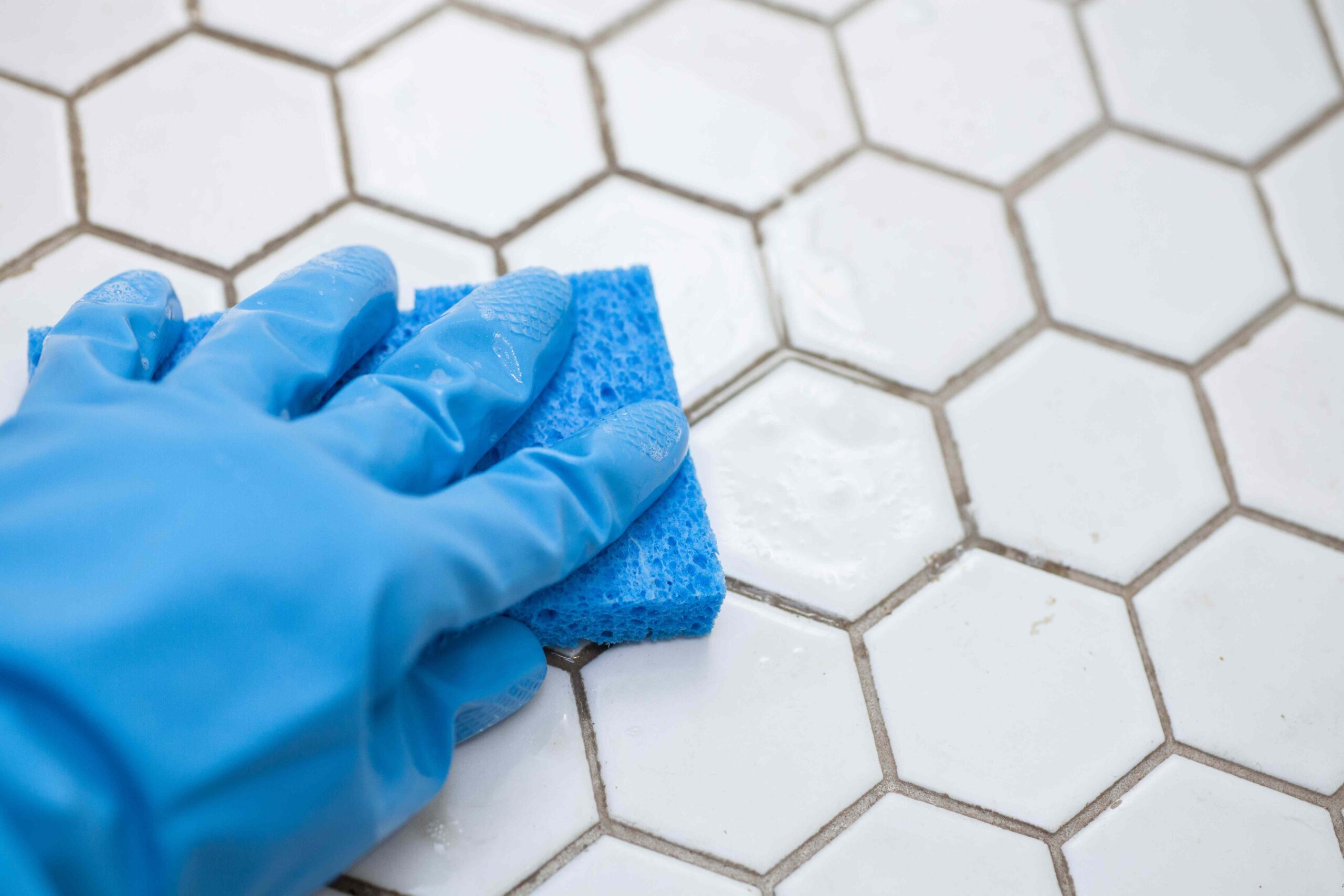Key Takeaways
- Reddish-pink tile grout stain is often caused by Serratia Marcescens bacteria.
- Treat the bacteria with 3% hydrogen peroxide and baking soda—it’s the most effective way of removing.
- Avoid using bleach, which can’t penetrate the bacteria’s biofilm and can make the issue worse.
Getting ready to shower or preparing for a long soak in the bathtub is supposed to be a cleansing, refreshing experience—and spotting slimy red buildup on the tiles and grout as you’re about to settle in is instantly off-putting.
If you have red tile grout in your bathroom or kitchen surfaces, our cleaning experts are here to help. They’re breaking down exactly what bacteria causes the issue, how to clean your grout, and the products you should (and shouldn’t) use.
Meet the Expert
- Jade Piper is the operations manager at BetterCleans cleaning company.
- Dr. Shanina Knighton is a nurse scientist, infection prevention specialist, and adjunct associate professor at Case Western Reserve University.
Why Your Grout Turned Red
The most likely suspect causing red grout in your home is a bacteria called Serratia Marcescens: a biofilm which thrives in damp environments. It is resistant to many cleaning products, and lingers and grows back quickly—even if it appears to be gone.
“If the color is a reddish-pink, that’s classic Serratia Marcescens,” cleaning expert Jade Piper explains. “It loves moisture, so you’ll usually spot it in shower grout, around tubs, under soap dishes or anywhere that stays damp. If you try to wipe it with a gloved finger or cloth, it spreads slimy and streaky.”
Want more cleaning and organizing tips? Sign up for our free daily newsletter for the latest hacks, expert advice, and more!
How to Fix Red Grout
Serratia Marcescens has many layers of biofilm, making it tricky to tackle with basic multipurpose cleaners alone. According to the pros, the best way to clear the bacteria out is to use hydrogen peroxide.
“Hydrogen peroxide works to kill bacteria by producing reactive oxygen that damages their DNA, proteins, and cell walls,” adjunct professor Dr. Shanina Knighton says. “It breaks down into water and oxygen, so it is safer than harsher chemicals like bleach when used properly.”
Using Hydrogen Peroxide
- Make sure the room you are cleaning is well-ventilated; open any windows and turn on the exhaust fan.
- Pre-treat the area with soap and water, a disinfectant wipe, or by scrubbing with a paste made from 2 tablespoons of baking soda and 1 tablespoon of water. Add a third tablespoon of baking soda if needed to thicken.
- Spray 3% hydrogen peroxide on the red area, and leave for 10 to 20 minutes.
- Using an old toothbrush, bathroom scrubber, or cleaning brush with stiff bristles, scrub the grout, then rinse and dry.
- Re-apply the hydrogen peroxide for another 20 minutes if needed, and use a baking soda and hydrogen peroxide paste on visibly stubborn spots of biofilm.
Skip the Bleach
Although bleach is a powerful disinfectant and will help get rid of the red look on grout, it’s not the best choice for tackling Serratia Marcescens; it can cause damage, irritate and burn skin, and even produce dangerous fumes when used incorrectly.
“Bleach can kill Serratia Marcescens, but is more irritating and can be damaging to some surfaces,” Dr. Knighton says. “Hydrogen peroxide is odorless, less corrosive, and still highly effective. It also does a better job penetrating biofilms, which is essential when dealing with bacteria that tend to hide in protected layers.”
5 Other Uses for Hydrogen Peroxide
Hydrogen peroxide makes an ideal addition to any home’s cleaning cabinet; there are plenty of other ways to use it hydrogen peroxide around the house. Because it has a shelf life of six months, here are a few other ways you can put it to use around the house before it becomes ineffective.
- Use hydrogen peroxide in the kitchen to clean and disinfect countertops and cutting boards.
- Combine equal parts hydrogen peroxide and water, and soak toothbrushes or loofahs for a few minutes to disinfect.
- Create a solution of equal parts hydrogen peroxide and water, and spray into your trash can to help keep it clean and neutralize odors.
- Spray the same solution onto shower curtains—or use some of your leftover hydrogen peroxide and baking soda paste—to treat mold and mildew.
- Keep a bottle of hydrogen peroxide on hand in the laundry room to use as a strain treatment, color brightener, and washing machine cleaner.










